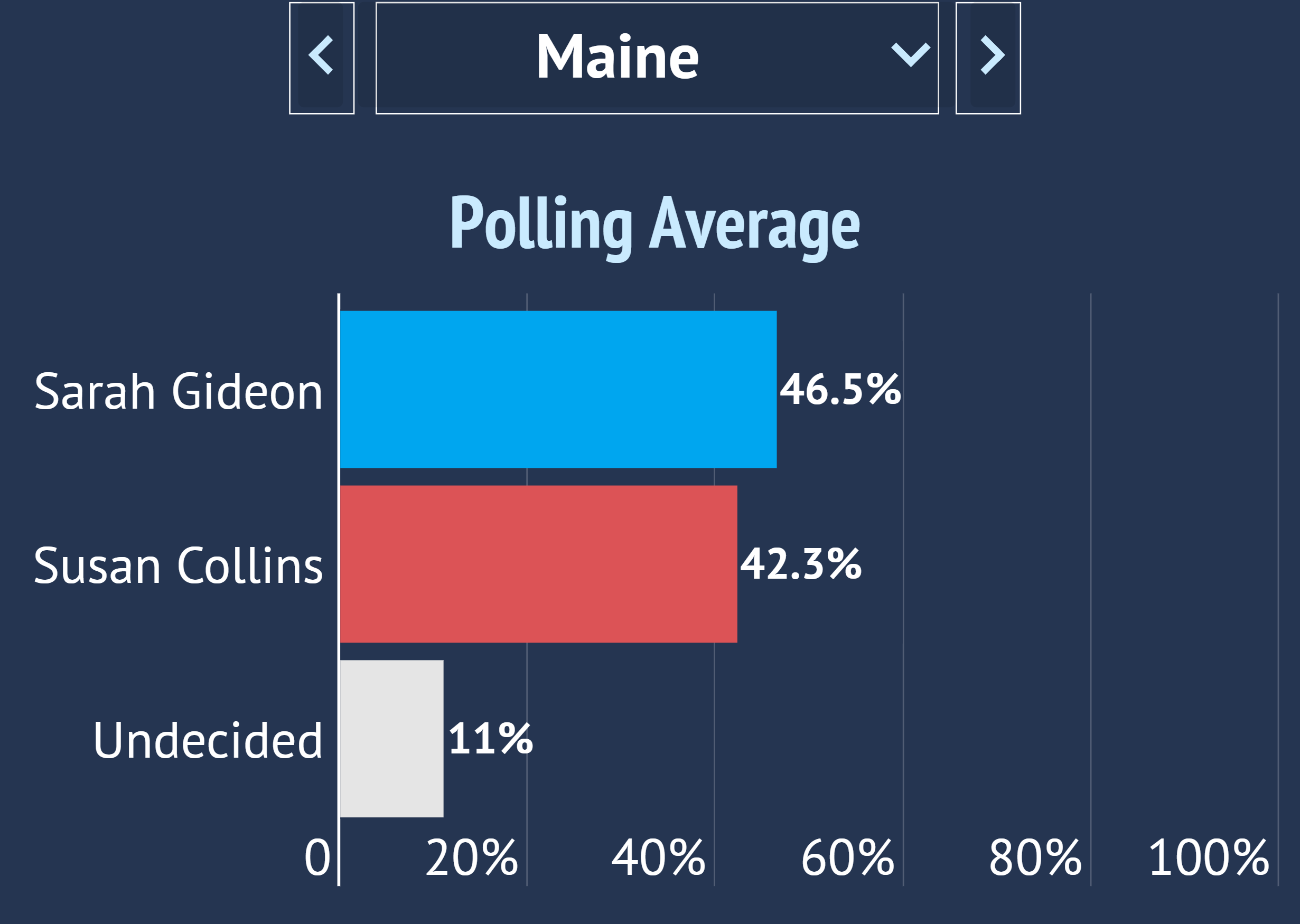The Essential Guide to the 2020 Senate Election
Mark Kelly, former Astronaut and Democrat Senate Candidate. Photo Credit: Gage Skidmore from Peoria, AZ, United States of America / CC BY-SA (https://creativecommons.org/licenses/by-sa/2.0)
By: Logan Phillips
Date: September 5th
This is part one of the Six Part Definitive Guide to the 2020 Senate.
Schedule:
Monday: How Democrats Can Win the Senate
Tuesday: How Republicans can Retain the Majority
Wednesday: Where Democrats have the Edge
Thursday: Race with Republicans Out Front
Friday : The True Tossup States
The Race for the Senate is Fiercely Competitive:
Once considered underdogs with long odds of victory, Democrats have emerged as the new front runners to take the Senate majority, after a surprisingly strong summer that has seen them make major ground in some of the most unlikely states in the nation. However, their advantage rests on a fragile foundation, and even a slight shift in the national environment could tilt the election back in the Republican party’s favor. The party that wins either fifty one seats outright, or fifty seats and the White House, takes the majority in the Senate – and with it the capacity to decide what legislation gets considered, which nominees get confirmed, and what issues see the light of day.
There’s a growing possibility that this election cycle could be a defining pivot point for a nation in crisis. There is much that a President can do by themselves with executive actions, but achieving lasting, sweeping, and enduring change almost always requires the support of the United States Senate. Voters will have to decide which parties’ vision they believe will best help get the nation back off its feet from the coronavirus, and get the economy up and going again. Republicans have endorsed deregulation, tax breaks for big companies, and repealing the Affordable Care Act. Democrats have embraced expanding affordable health care, investing in clean energy, and raising the minimum wage.
Democrats have a decisive edge, (an 85% chance of victory or higher), in 47 Seats, but they will have to win tough elections in Republican leaning states and against long time incumbents to win the majority. Meanwhile, the Republican party find themselves in the opposite position. They are only the decisive favorite in 42 seats, but they have at least a slight to moderate advantage in all ten of the eleven remaining states.
There are a remarkably wide range of plausible outcomes for election day, making 2020 one of the most interesting Senate elections in decades. It remains quite possible that Republicans can lock Democrats out of a majority once again, and even keep them frozen at their current 47 seat count. On the other hand, if the political landscape shifts even mildly towards Democrats, they could be the beneficiaries of an historic triumph and a nationwide rejection of the Republican party. The G.O.P could find themselves on the outside looking in with 45 or less seats, and even in danger of losing states like Texas and Kentucky.
Incumbents Beware:
For generations, most incumbent Senators have dominated their elections, coasting to re-election with nary a serious risk of loss outside of the nation’s swing states. With six years in Washington currying favor and support from big donors, incumbents normally have an enormous financial advantage, and can often drown their opponents in advertising. Most challengers don’t have the resources to get their message out, let alone counter the incoming fire from the inevitable barrage of attack ads.
Senate Races
In-depth projections for every Senate Race that are data-driven and evidence based, while being fun to read and easy to understand.
This year has seen a dramatic reversal of that trend – and challengers, particularly from the Democratic party, are riding a tsunami of small dollar donor donations that have enabled them to already outraise sitting Senators– even in states that normally are far from competitive like South Carolina and Kentucky. This gives challengers a fighting shot - and after months of advertising and establishing their profiles with voters, many are in serious contention.
In fact, as you can see in the interactive chart below, many of the sitting incumbents are in a significantly worst position today than they were at the beginning of the year. Consequently, this cycle has more competitive races than any previous year in the millennium.
Next Up:
On Monday, we’ll release Part Two of the Essential Guide to the Race to the Senate to break down the Pathway to Victory for both Democrats and Republicans. Then, on Wednesday, we’ll take a look around the country at the single most important elections that will determine the nation’s future. We’ll start with the races where Democrats have taken the lead – like Arizona, where Astronaut Mark Kelly has rocketed ahead and left Republican Senator Martha McSally stranded behind in orbit.
Then, on Wednesday, we’ll focus in on the states where republicans have the advantage but where Democrats could still break through – including South Carolina, a deep red state where Jamie Harrison has astounded expectations and become a genuinely viable underdog against longtime incumbent Lindsey Graham. Finally, on Thursday we’ll end with the most competitive races in the nation where neither side has a decisive edge – including Iowa – where Republican 2014 breakout star Joni Ernst has been unable to shake political newcomer Theresa Greenfield in a an election that will almost certainly go down to the wire.
Senate Races
While you wait for the next part, you can check out our extensive breakdown of every Senate Race. We have in-depth, scientific and data driven projections that are nonetheless easy to understand and fun to look at. They tell you who we think is going to win and how we came up with our projection - and then shows you everything you need to know to make your own conclusions about the race. That includes polling, how popular/unpopular the Senators are, what the political landscape looks like in the state, who has raised the most money, and what type of experience the candidates have. We update the Forecast every single day there is new polling and data available.
Make sure you don’t miss the next piece by bookmarking www.racetothewh.com, or by following us on Facebook, Instagram and Twitter.













